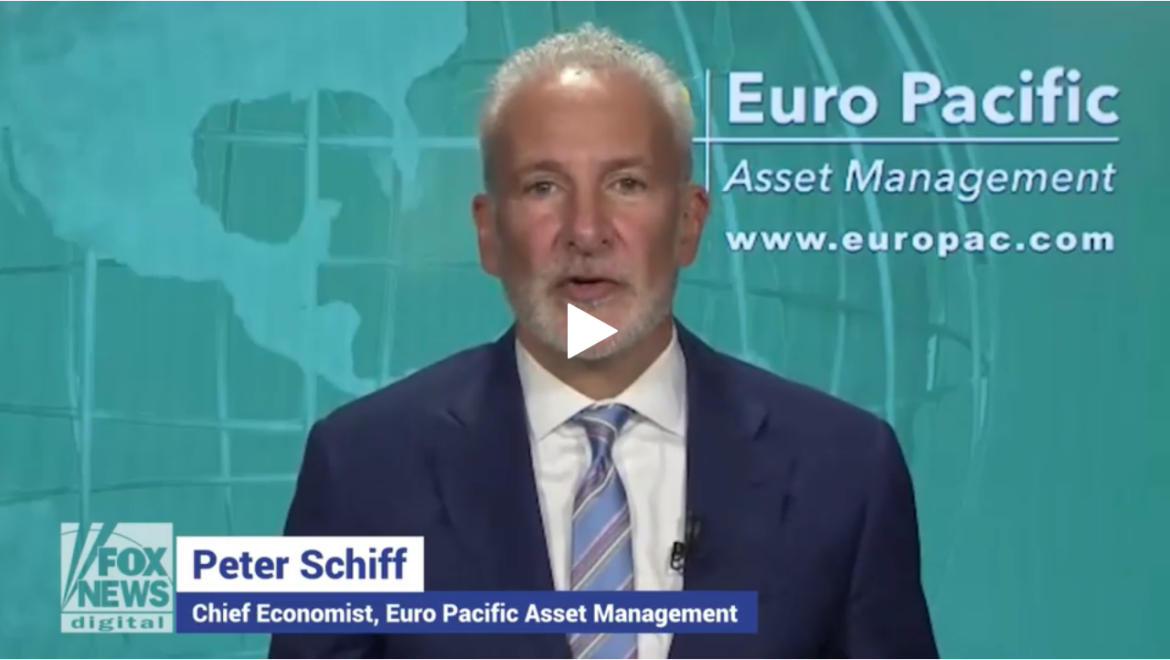Gold has all the potential to go unprecedentedly high. But silver will be gold on
Site:
Precious metals news
Sep 6, 2023 - 06:32:25 PDT
Biden heads to G20 in India, but Xi and Putin won't attend. Divisions on Ukraine, fossil fuels, and global debt restructuring may hinder progress. Climate change and Russia's war in Ukraine are on the agenda. China's absence impacts economic cooperation, potentially hampering US efforts. India asserts itself as a global player. G20 faces resistance to fossil fuel phase-outs due to economic concerns from countries like Saudi Arabia and Russia.
US home-purchase mortgage applications hit a 28-year low due to high mortgage rates. The 30-year fixed rate, at 7.21%, is near historic highs. Overall mortgage demand also fell to a nearly 27-year low, pushing housing affordability to its worst point in decades. High rates make homeownership less affordable, and low-rate holders are reluctant to sell, limiting supply and driving up prices. Until borrowing costs drop, the issue may persist, despite new construction. The Fed doesn't seem to lower rates soon, aiming to curb inflation.
Sep 6, 2023 - 06:09:42 PDT
Bidenomics appears to be heading into a dark phase. The real-time GDP tracker from the St. Louis Fed, Nowcast, is projecting a -0.07% GDP for Q3, coinciding with a sharp decline in M2 money growth.
However, if you're looking for optimism, the Atlanta Fed's GDPNow estimate, led by housing economist Raphael Bostic, paints a brighter picture with a Q3 GDP projection of 5.6%.
The question on many minds is when the Federal Reserve will return to its days of low-interest rates.
 The Soaring Us Dollar Is Sending Asian Currencies to Multi-Month Lows, Euro Is Under Pressure
The Soaring Us Dollar Is Sending Asian Currencies to Multi-Month Lows, Euro Is Under PressureSep 6, 2023 - 06:00:55 PDT
Japan and China have raised concerns over the rapid depreciation of the yen and yuan, respectively, as both currencies face pressure from the strengthening US dollar. The yen has fallen nearly 8% against the US dollar since mid-July, while the yuan has declined more than 6% since May. Traders anticipate the Federal Reserve will maintain higher interest rates for an extended period, causing pressure on other currencies like the euro and pound, which may need to cut rates faster to mitigate the impact of rising borrowing costs.
 The Soaring US Dollar Is an Ongoing Risk in Liquidity to China and the Rest of the World
The Soaring US Dollar Is an Ongoing Risk in Liquidity to China and the Rest of the WorldSep 6, 2023 - 06:00:55 PDT
Japan and China have raised concerns over the rapid depreciation of the yen and yuan, respectively, as both currencies face pressure from the strengthening US dollar. The yen has fallen nearly 8% against the US dollar since mid-July, while the yuan has declined more than 6% since May. Traders anticipate the Federal Reserve will maintain higher interest rates for an extended period, causing pressure on other currencies like the euro and pound, which may need to cut rates faster to mitigate the impact of rising borrowing costs.
Silver is fundamentally a monetary metal and its price tends to track with gold over time. But it is also an important element in technology and industry. Industrial use makes up more than half of the demand for silver.We're seeing new uses for silver in technology all the time. The most recent issue of Silver News from the Silver Institute highlights some of these new developments.
Peter Schiff recently appeared on Fox Digital and poured a bucket of cold water on those who believe the Federal Reserve is winning the inflation fight. In fact, the Fed isn't making any progress at all.
 THE COLLATERAL TRAP: Massive U.S. Treasury Issuance vs. Global Gold Production Value
THE COLLATERAL TRAP: Massive U.S. Treasury Issuance vs. Global Gold Production ValueSeptember 6, 2023
Unfortunately, most investors are sleep-walking into the "Collateral Trap" as massive U.S. Treasury issuance has totally disconnected from the physical economy. It's truly amazing that the global financial system leverages debt based upon U.S. Treasuries, which are also debt...
First and foremost, I want to extend my deepest gratitude for your incredible support. Thanks to you, "The Great Gold and Silver Rush of the 21st Century" has not only rebounded but is currently sold out on Amazon!I've recorded a quick video message to personally thank you and to give you an update on when the book will be back in stock.Your support has been nothing short of amazing, and I can't wait to share what's coming next.Thank you once again for being a part of this incredible journey.
Global central banks continued adding to their gold reserves in July with healthy net purchases of 55 tons. While there was a slowdown compared to the previous month, the trend of net buying remains intact. Notably, the People's Bank of China was the largest buyer, adding 23 tons in July and solidifying its position as the leading buyer for the year. The National Bank of Poland increased its gold holdings by 22 tons, marking the fourth consecutive month of net buying. The Central Bank of Turkey, despite being a net seller for the year, turned into a net buyer in July. Other countries including Qatar, Singapore, and the Czech Republic also made gold purchases.
The federal deficit is set to nearly double this year, reaching $2 trillion, compared to last year's $1 trillion. This unprecedented level of deficits, not tied to war or crisis, is concerning. The massive spending imbalance contributes to higher interest rates, impacting consumers and mortgages. In the long term, these interest costs will strain federal priorities. Despite strong economic growth, bigger interest payments and lower tax receipts persist, defying the usual deficit reduction trend. The annual deficit was even larger in 2021, hitting $2.8 trillion due to extensive COVID-related spending.
Subsidized green energy projects are faltering as costs soar. Offshore wind and solar developers demand sharp price increases due to rising expenses, despite the Inflation Reduction Act's subsidies. Government-driven demand for renewable projects has worsened inflation, making solar and wind much pricier than natural gas. Even with generous support, EVs, solar, and wind lack scalability due to mineral shortages and labor constraints. Biden's policies worsen inflation and energy instability.
Bloomberg warns of a recessionary chill as the gap between GDP and GDI widens. GDI has been weaker than GDP for four quarters, signaling economic trouble. Declining GDP growth, plummeting job openings, falling labor leverage ratio, and sinking corporate profits suggest a looming downturn. With data indicating a potential recession since 2022 end, an NBER declaration could highlight the Biden administration's economic struggles. The economy faces risks from inflation, falling wages, and political narratives.
Bloomberg warns of a recessionary chill as the gap between GDP and GDI widens. GDI has been weaker than GDP for four quarters, signaling economic trouble. Declining GDP growth, plummeting job openings, falling labor leverage ratio, and sinking corporate profits suggest a looming downturn. With data indicating a potential recession since 2022 end, an NBER declaration could highlight the Biden administration's economic struggles. The economy faces risks from inflation, falling wages, and political narratives. Mainstream media's belated recognition of these issues may hint at a recession's aftermath.
Home prices, measured by Case-Shiller, have sharply risen compared to average hourly earnings, rent, and the CPI, indicating a concerning housing bubble. In May 2006, prices were 49.2-52.9% above income, CPI, and rent. Now, they stand 38.0-69.4% higher. Rising rent forced many into home buying, intensifying the issue. Adding property taxes, insurance, and student loans worsens the situation. With mortgage rates above 7.0 percent, a prolonged period of weak housing is anticipated.
Sep 5, 2023 - 08:52:29 PDT
The Financial Stability Board warns of upcoming challenges and shocks in the global financial system due to rising interest rates, impacting economic recovery and sectors like real estate. The board's chair, Klaas Knot, emphasizes monitoring real estate for stress and urges proper risk management by financial providers. He highlights the need for consistent implementation of global bank capital rules by 2023 and tighter regulation of non-bank financial institutions. Policymakers are considering further refinements to address vulnerabilities exposed this year.
Sep 5, 2023 - 08:46:17 PDT
Gold and silver markets see some upward movement after trading lower since spring. Gold prices rise 1.2% to $1,950/ounce, while silver remains unchanged at $24.47/ounce this week. Platinum gains 1.8% at $985, and palladium dips 3.8% to $1,271/ounce. Signs of strength appear as markets anticipate the end of Federal Reserve rate hikes. Fed's preferred inflation gauge shows a 4.2% annual rate, above the 2% target. Some speculate the Fed may raise the target to 3% or 4%. Investing in precious metals can protect against inflation, as history shows gold's purchasing power grew from $20 to $2,000 per ounce in 100 years.
Inflation is a result of excessive money printing by the Federal Reserve. Trillions of dollars since the 2008 crisis inflated stock prices and enriched the super-rich. Sanctions on Russia worsened the situation. US CPI shows around 17.3% inflation, the highest in 75 years. It's not due to Russia's actions but the Fed's money creation. The US, UK, and EU are in a deep-seated inflationary cycle that won't ease soon. The rich can weather it, while ordinary people suffer. This inflation is not "transitory" and may be a permanent fixture.
Over the past decades, the media has spotlighted foreign terrorism while turning a blind eye to the terror perpetrated by those in power. Governments and enforcement agencies are the true terrorists, exploiting fear to maintain control. This includes the recent 'pandemic' scare. Orchestrated crises like the bogus 'climate change' agenda and the impending digital currency takeover are imminent threats to freedom. The clock is ticking, and urgent action is needed to divert this perilous course.
I've been saying that the government job numbers seem wonky. Looking at the monthly revisions bear this out. Every month this year, the Bureau of Labor Statistics has revised the nonfarm payroll numbers from previous months lower.








